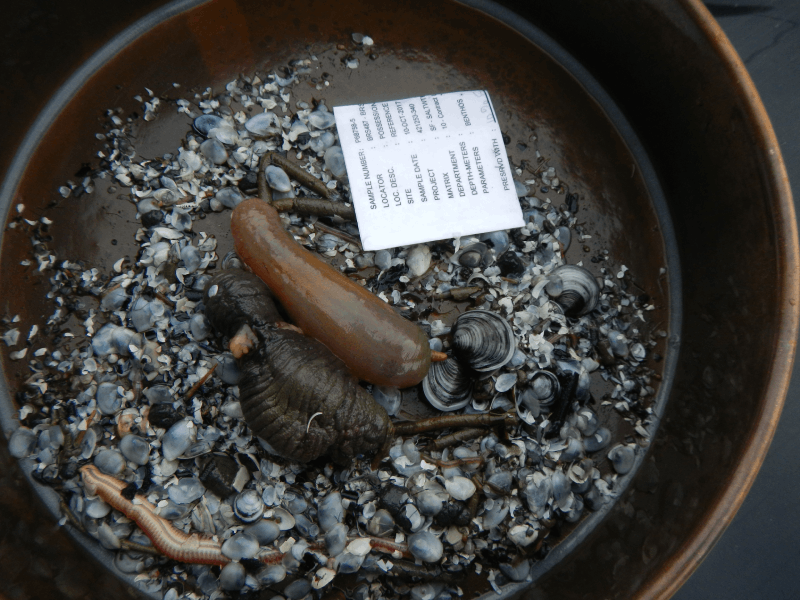Subtidal (Offshore) Benthos

Benthic invertebrates, or benthos, are the worms, clams, snails, crabs, and more that live in the sediment at the bottom of Puget Sound. These animals are ecologically, economically, and culturally important. They play a vital role in the Puget Sound food web, being eaten by larger predatory animals in the sediment, by fish like salmon, and even people in the case of many mollusks, crabs, and urchins.
Who lives where at the bottom of Puget Sound is influenced by what the bottom looks like (e.g., is it sandy or silty?), how deep it is, which chemicals are present, and who is eating whom. To better understand what is happening to this crucial part of the food web and what it can tell us about the health of that habitat, we collect benthos samples using a dual van Veen grab sampler.
Samples tell us which and how many organisms are present. Benthos sampling began in 2015 with 14 sites sampled every two to five years. Currently, benthos samples are collected every year from 6 sites and additional sediment samples are collected once every four years at the same locations. These extra samples help us understand what the sediments are like physically and chemically and how they support different species.
More Information
The primary goal of this monitoring is to:
-
Assess the health of the benthic community at a subset of shallow and deep stations where sediment chemistry data have been collected.
Supporting goals of this monitoring are to:
- Use information about water quality and sediment chemistry to better understand differences in the benthic community.
- Use benthic community data to better understand the relationship between benthos and the planktonic stage of benthic invertebrates (zooplankton).
- Document what known benthic invertebrate prey items are available for juvenile salmon (e.g., yearling Chinook) at our shallow subtidal sites in Elliott Bay.
| Metric Type | By Individual | By Major Taxonomic Group | By Sample |
|---|---|---|---|
| Taxonomic identification | ✓ | ||
| Abundance (count) | ✓ | ✓ | ✓ |
| Richness | ✓ | ✓ | |
| Biomass | ✓ | ✓ | |
| Shannon-Wiener diversity | ✓ | ||
| Pielou’s evenness | ✓ | ||
| Swartz’s dominance | ✓ |
Access Data
Data can now be downloaded from the King County Open Data platform:
Some data may be provisional. Contact MarineWQ@kingcounty.gov for information about the most recent quality control of data.
Documentation
Learn more about our program by reading documents such as the latest sampling and analysis plans and read relevant reports and presentations.
Contact us with any questions or to access additional resources in the Science Section Library.
 Translate
Translate